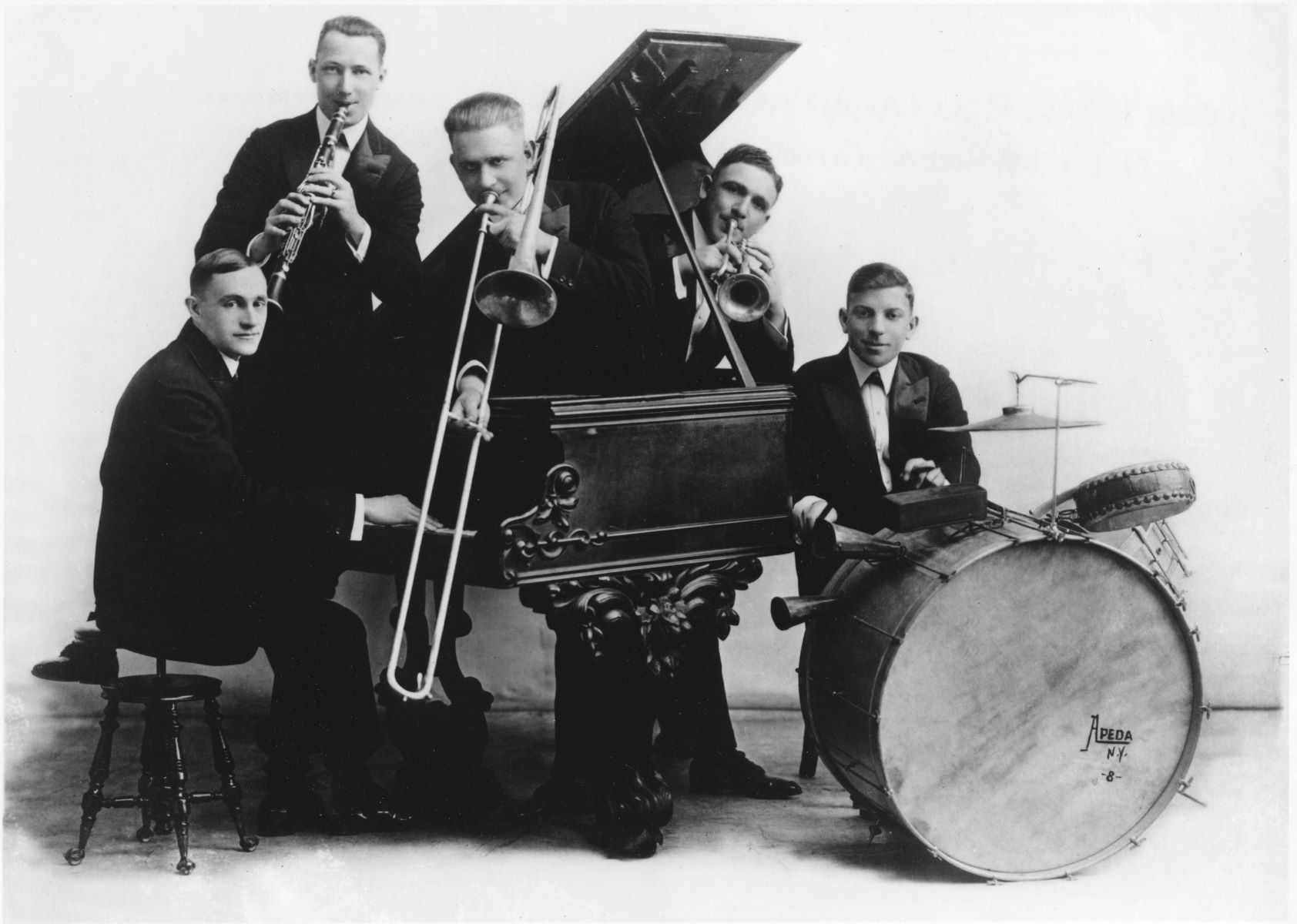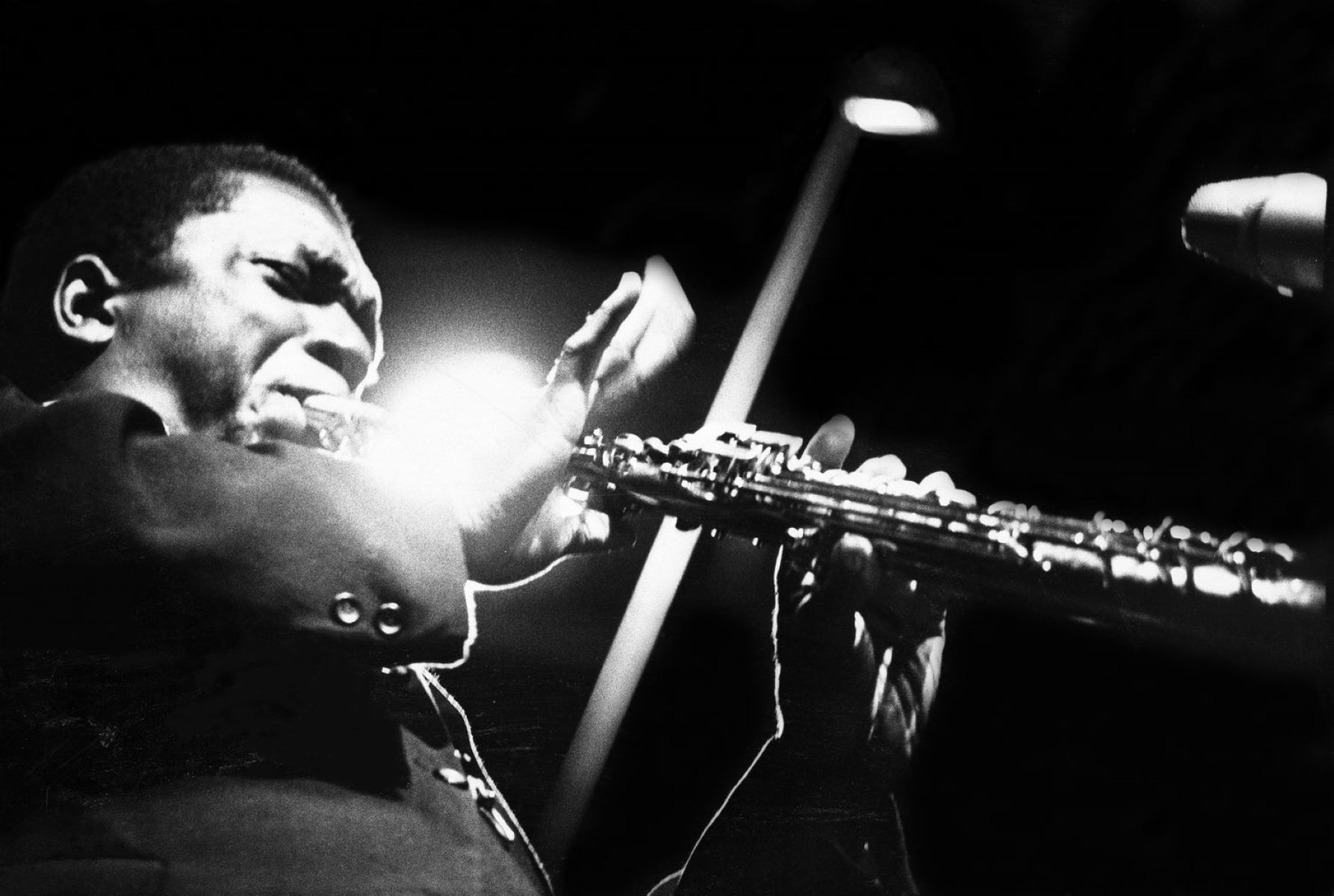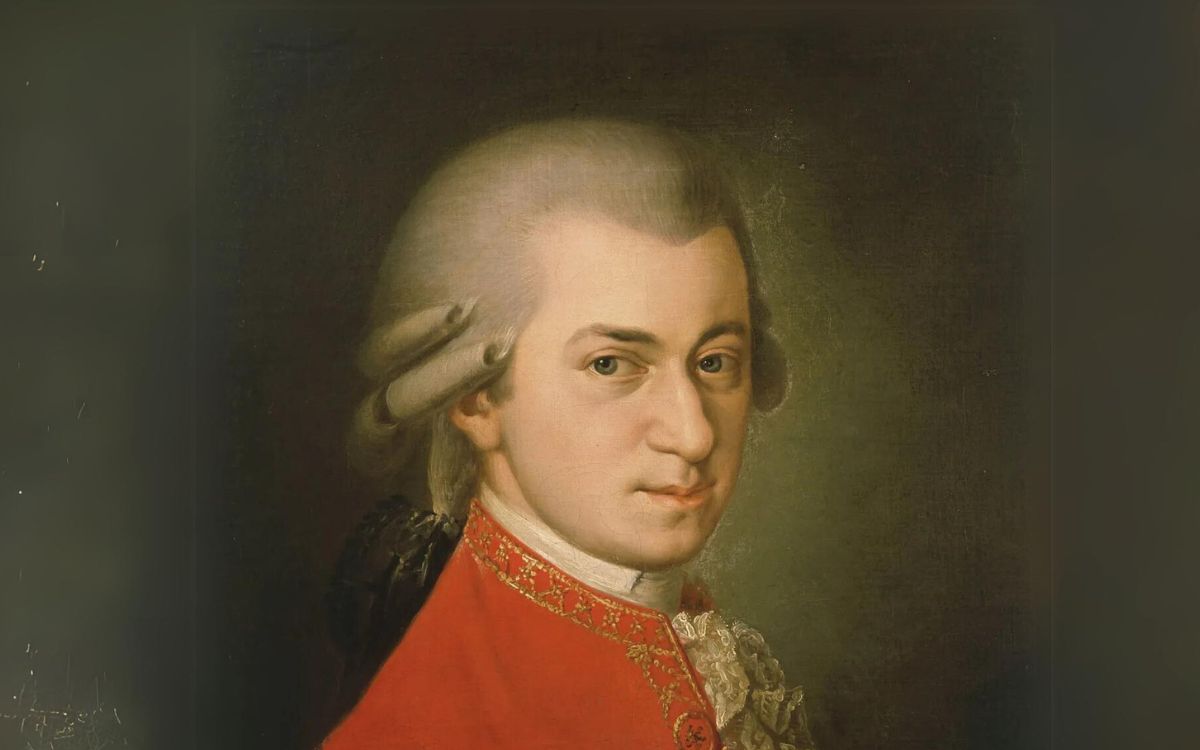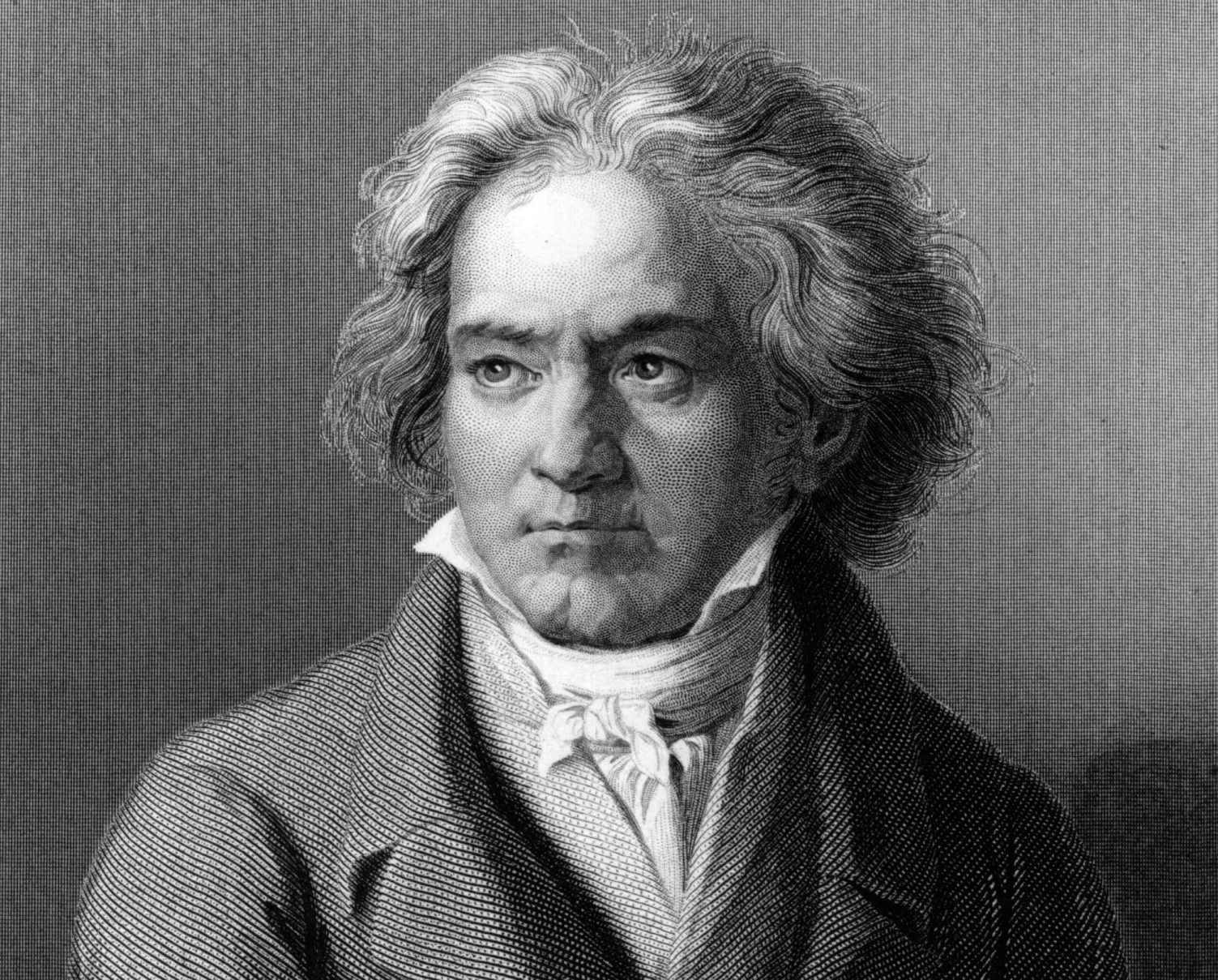Home>Genres>Jazz>How Did The Rise Of Speakeasies During Prohibition Affect Jazz Musicians?
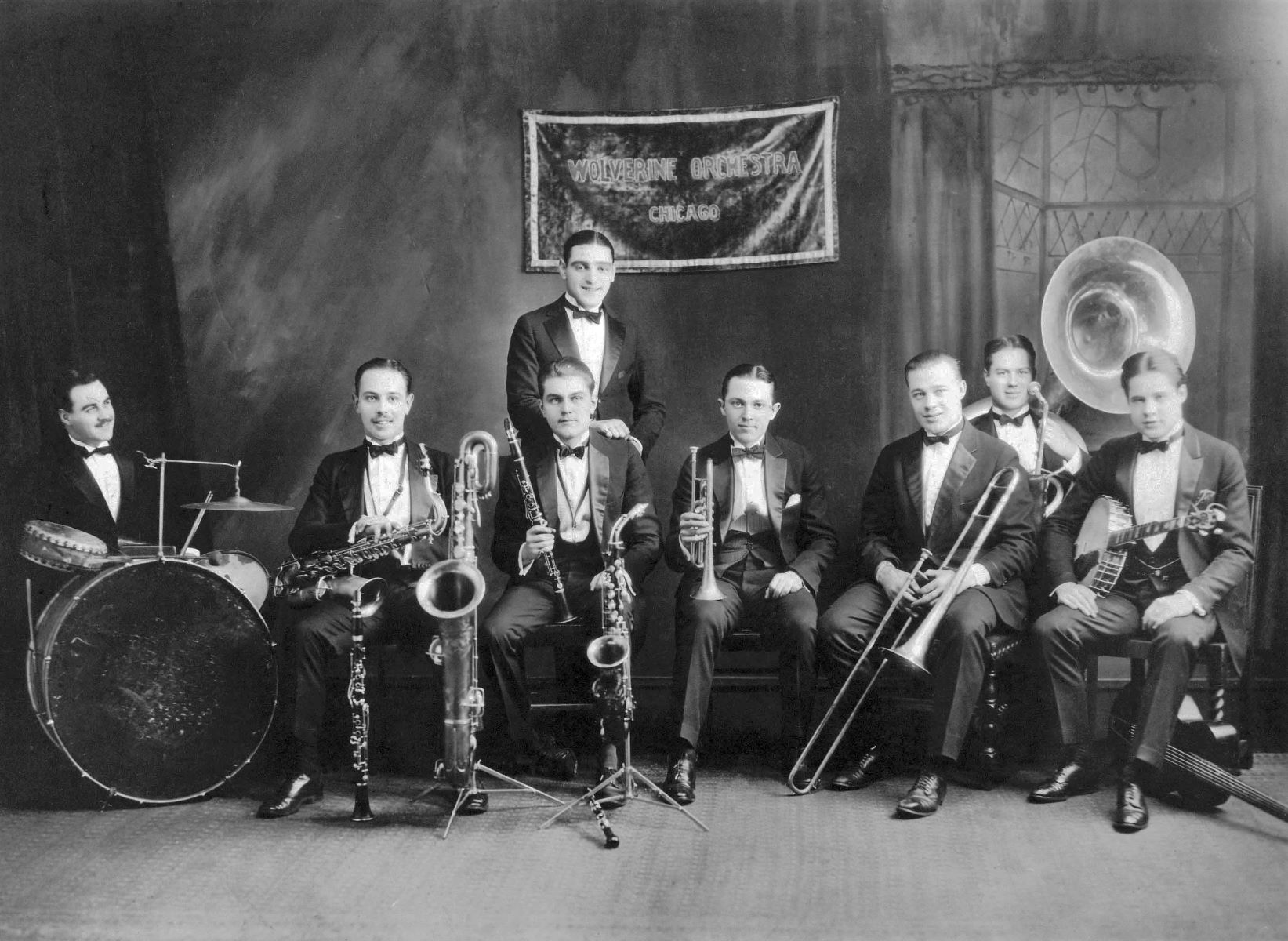

Jazz
How Did The Rise Of Speakeasies During Prohibition Affect Jazz Musicians?
Modified: January 22, 2024
Discover the impact of speakeasies on jazz musicians during Prohibition. Explore how this clandestine culture influenced the vibrant world of jazz.
(Many of the links in this article redirect to a specific reviewed product. Your purchase of these products through affiliate links helps to generate commission for AudioLover.com, at no extra cost. Learn more)
Table of Contents
- Introduction
- Background on Prohibition
- Definition of Speakeasies
- The Emergence of Speakeasies during Prohibition
- Prohibition’s Impact on Jazz Musicians
- Jazz Musicians in Speakeasies
- Opportunities for Jazz Musicians in Speakeasies
- Challenges Faced by Jazz Musicians in Speakeasies
- The Influence of Speakeasies on Jazz Music
- Legacy of Speakeasies for Jazz Musicians
- Conclusion
Introduction
The Jazz Age, also known as the Roaring Twenties, was a transformative period in American history marked by rapid social, cultural, and economic change. This era, characterized by its exuberance, rebellion, and newfound freedoms, saw the rise of jazz music as a prominent cultural force. However, the advent of Prohibition during this time brought about a series of challenges and opportunities for jazz musicians.
Prohibition, which was enacted in 1920, made the production, sale, and transportation of alcohol illegal in the United States. While this law aimed to bring about social reform and reduce crime, it inadvertently led to the emergence of a hidden culture of illegal bars and clubs – known as speakeasies.
Speakeasies, deriving their name from the necessity to “speak easy” or quietly to avoid attracting attention, quickly became vibrant social hubs that thrived despite the nationwide ban on alcohol. These secret venues not only provided a place for individuals to socialize and consume alcohol in secrecy, but they also had a profound impact on the development of jazz music and the careers of jazz musicians.
In this article, we will explore how the rise of speakeasies during Prohibition affected jazz musicians. We will delve into the opportunities and challenges faced by these musicians in these underground establishments and examine the lasting influence of the speakeasy culture on jazz music. Through this exploration, we will gain a deeper understanding of the integral role speakeasies played in the evolution of jazz during the 1920s and beyond.
Background on Prohibition
The roots of Prohibition can be traced back to the temperance movement of the late 19th and early 20th centuries, which advocated for the restriction or elimination of alcohol consumption. Supporters of the movement believed that alcohol was the root cause of many social issues, including domestic violence, crime, and poverty. After years of pressure from temperance groups, the 18th Amendment to the United States Constitution was ratified in 1919, officially prohibiting the manufacture, sale, and distribution of alcoholic beverages.
Prohibition represented a radical shift in American society. Overnight, legal bars and breweries shut down, leading to the loss of jobs and revenue. However, instead of curbing alcohol consumption, Prohibition gave rise to a booming underground industry centered around the illicit production and distribution of alcohol. This illegal trade created a lucrative market that was exploited by organized crime syndicates, leading to an increase in bootlegging, speakeasies, and illegal drinking establishments.
The strict enforcement of Prohibition laws by federal agencies, such as the notorious Bureau of Prohibition, proved to be a daunting task. Undercover agents were deployed to crack down on speakeasies and arrest individuals involved in the illegal alcohol trade. Despite their efforts, speakeasies thrived, becoming popular destinations for socializing and the consumption of alcohol.
Prohibition lasted from 1920 to 1933, but its impact on American society and culture was profound. The era gave rise to a counterculture defined by hedonism, rebellion, and the pursuit of pleasure. It was within this context that jazz music – with its vibrant rhythms, improvisation, and expressive nature – found its foothold.
Now that we have established the historical backdrop of Prohibition, let us delve into the fascinating world of speakeasies and their impact on jazz musicians during this tumultuous period.
Definition of Speakeasies
Speakeasies were clandestine venues that operated illegally during the Prohibition era, providing a haven for individuals to gather, socialize, and indulge in alcohol. These establishments acquired their name from the need to “speak easy” or speak softly to avoid attracting the attention of law enforcement or informants.
Speakeasies varied in size and style, ranging from small, hidden establishments in basements or backrooms of legitimate businesses to lavish, upscale clubs that catered to the wealthy and influential. Some were operated by organized crime syndicates, while others were run by individual entrepreneurs looking to capitalize on the demand for alcohol.
These hidden bars and clubs often adopted creative and elusive tactics to maintain their secrecy. Entrance to a speakeasy was typically granted through a hidden door, accessed by a secret code or a knock in a specific rhythm. Many speakeasies also employed lookout mechanisms, such as peepholes or buzzers, to ensure that only trusted individuals were allowed inside.
Inside the speakeasies, a lively and vibrant atmosphere reigned. Patrons enjoyed music, dancing, and socializing, often accompanied by the rhythmic melodies of jazz music. Speakeasies served as a refuge from the constraints imposed by Prohibition, fostering a sense of rebellion and camaraderie among its patrons.
The popularity of speakeasies transcended social and cultural boundaries, attracting individuals from diverse backgrounds, including musicians, artists, writers, politicians, and the urban elite. These underground venues became synonymous with the spirit of liberation and excess that defined the Jazz Age.
Now that we have a clear understanding of what speakeasies were and their clandestine nature, we can delve into how the emergence of these vibrant establishments shaped the fortunes of jazz musicians during the Prohibition era.
The Emergence of Speakeasies during Prohibition
The enactment of Prohibition in 1920 led to the rapid emergence of a hidden underground culture centered around the consumption of alcohol. With legal bars and breweries forced to shut down, the demand for alcohol remained unabated, creating a lucrative market that was filled by illegal suppliers.
Speakeasies sprouted up in cities across the United States as a direct response to the demand for alcohol and the desire for socializing in secret. These hidden establishments became the go-to places for individuals looking to enjoy a drink and escape the restrictions imposed by Prohibition. Speakeasies not only satisfied the thirst for alcohol but also provided a sense of rebellion and a space for cultural expression.
The popularity of speakeasies can be attributed to several factors. Firstly, the allure of exclusivity and secrecy added an element of excitement for patrons. The clandestine nature of these establishments made them appealing to those who sought to indulge in activities considered illicit at the time.
Secondly, speakeasies offered an escape from the mundane and conventional social norms of the era. In these hidden venues, people could let loose, dance, and enjoy music without the moral judgments or restrictions prevalent in public spaces.
Furthermore, the rise of speakeasies coincided with the growing popularity of jazz music. Jazz, with its infectious beats, improvisation, and syncopation, resonated with the rebellious spirit of the Prohibition era. Speakeasies became the perfect setting for jazz musicians to perform and experiment with their craft, drawing in audiences who craved the vibrant and energetic sounds of this new form of music.
It is important to note that the emergence of speakeasies was not without risks. The illegal nature of these establishments meant that owners and patrons were constantly at risk of being caught and arrested by the authorities. However, the allure and profitability of these secret venues made many willing to take the risk and operate underground bars.
The emergence of speakeasies during Prohibition had far-reaching consequences for both the culture of the time and the jazz musicians who sought opportunities to perform and thrive in this new landscape. In the next sections, we will explore in detail how speakeasies shaped the careers of jazz musicians and the impact they had on the development of jazz music.
Prohibition’s Impact on Jazz Musicians
The era of Prohibition had a significant impact on jazz musicians, both in terms of the opportunities it presented and the challenges they faced. The rise of speakeasies during this period created a unique environment that shaped the careers and trajectories of jazz musicians.
One of the key impacts of Prohibition on jazz musicians was the increased demand for live music in speakeasies. As the popularity of these hidden establishments grew, the need for entertainment became paramount. Jazz musicians, with their ability to improvise, captivate audiences, and create an energetic atmosphere, were in high demand. This offered jazz musicians numerous opportunities to perform, gain exposure, and make a living amidst an otherwise challenging economic climate.
Additionally, the vibrant atmosphere and rebellious nature of speakeasies provided jazz musicians with a creative and experimental outlet. These underground venues became a breeding ground for innovation and new musical styles. Jazz musicians were able to push musical boundaries, try out new techniques, and collaborate with other artists in a more relaxed and unconventional setting.
However, despite the opportunities, jazz musicians also faced a unique set of challenges during the Prohibition era. The illegal nature of speakeasies meant that the working conditions were often unpredictable and unstable. Musicians had to navigate the constant threat of police raids, violence, and the ever-present possibility of being shut down and losing their livelihoods overnight.
Furthermore, the speakeasy environment often meant that jazz musicians had to adapt their music to cater to the tastes of the audience and create a lively ambiance. While this led to the development of a more accessible and entertaining style of jazz, it sometimes overshadowed the artistic integrity and complexity of the music.
Despite the challenges, jazz musicians during the Prohibition era played a crucial role in the development and evolution of the genre. The demand for live music in speakeasies provided them with a platform to showcase their talent and expand their repertoire. The unique setting also allowed them to interact with diverse audiences and gain a deeper understanding of the cultural influences that shaped jazz music.
In the next sections, we will explore the opportunities and challenges faced by jazz musicians in speakeasies and examine the lasting influence of the speakeasy culture on jazz music.
Jazz Musicians in Speakeasies
Speakeasies, illegal establishments that served alcohol during Prohibition, played a pivotal role in shaping the careers of jazz musicians. These hidden venues provided a fertile ground for jazz musicians to perform, experiment, and establish their reputation. The vibrant atmosphere and the demand for live music in speakeasies made them a natural habitat for these musicians.
Jazz musicians found themselves at the center of the entertainment scene in speakeasies. With their ability to improvise, create infectious rhythms, and captivate audiences, they were highly sought after by club owners and patrons alike. The live music provided by jazz musicians enhanced the atmosphere in speakeasies, elevating the experience for those seeking an escape from everyday life.
Performing in speakeasies gave jazz musicians the opportunity to showcase their talent and connect with audiences in an intimate setting. The close proximity between the musicians and the audience fostered a sense of camaraderie and created a unique interactive experience. Musicians could interact with the crowd, respond to their energy, and tailor their performances to evoke a specific mood.
Moreover, speakeasies offered jazz musicians the chance to collaborate with other talented individuals. Musicians from different backgrounds and genres would often come together in these hidden venues to create diverse and dynamic musical collaborations. This cross-pollination of ideas and styles within the speakeasy environment played a crucial role in pushing the boundaries of jazz music and fostering its evolution.
However, it is important to acknowledge that not all jazz musicians had equal access to the opportunities provided by speakeasies. Discrimination and segregation were prevalent during this time, and African American jazz musicians, in particular, often faced significant challenges in finding work in mainstream venues. Speakeasies, on the other hand, provided a certain level of anonymity and freedom, allowing these musicians to showcase their talents without the restrictions imposed by society.
Jazz musicians in speakeasies were not solely defined by their performances. They also became integral members of the social fabric within these establishments. They formed relationships with fellow musicians, patrons, and even the owners of speakeasies. These connections often led to further opportunities, as musicians would be recommended for other gigs or introduced to influential individuals who could help further their careers.
To sum up, jazz musicians thrived in the speakeasy environment. These venues provided a platform for them to perform, experiment, collaborate, and connect with audiences in a way that was not always possible in mainstream establishments. The speakeasy culture not only shaped the careers of individual musicians but also played a significant role in the development and evolution of jazz music as a genre.
Opportunities for Jazz Musicians in Speakeasies
Speakeasies, the secret underground bars that thrived during the Prohibition era, presented numerous opportunities for jazz musicians. These establishments created a vibrant and dynamic environment that allowed musicians to showcase their talents, gain recognition, and establish themselves in the jazz scene. Here are some of the key opportunities that speakeasies presented for jazz musicians:
1. Regular Performance Opportunities: Speakeasies provided a consistent platform for jazz musicians to perform. Unlike traditional venues that were limited by legal restrictions and societal biases, speakeasies welcomed jazz music and its energetic atmosphere. Musicians could secure regular gigs, which not only provided them with income but also allowed them to hone their skills and build a following.
2. Exposure to Diverse Audiences: Speakeasies attracted a diverse range of patrons. People from all walks of life, including artists, intellectuals, businessmen, and socialites, frequented these hidden venues. Jazz musicians had the opportunity to perform in front of different audiences and gain exposure to new listeners who may not have otherwise been exposed to their music.
3. Creative Freedom and Experimentation: The clandestine nature of speakeasies allowed jazz musicians the freedom to experiment and push the boundaries of their music. In these underground establishments, musicians were not confined to strict musical guidelines imposed by mainstream venues. They were able to explore new musical styles, incorporate innovative techniques, and collaborate with other talented musicians, leading to the evolution and diversification of jazz music.
4. Networking and Collaboration: Speakeasies provided a unique social environment where musicians could network and form connections with fellow artists, patrons, and industry professionals. Collaboration with other musicians from various genres and backgrounds was common in speakeasies, leading to the fusion of different musical styles and the cross-pollination of ideas. These collaborative efforts often paved the way for new creative expressions and helped jazz musicians expand their artistic horizons.
5. Financial Stability: Despite the illegal nature of speakeasies, these establishments were highly profitable. The demand for alcohol and live entertainment created a lucrative market, allowing musicians to secure steady income and financial stability. This stability was especially valuable during a time when many musicians struggled to find work due to the economic hardships brought about by the Great Depression.
6. Cultivating a Dedicated Fanbase: Playing regularly in speakeasies afforded jazz musicians the opportunity to build a loyal fanbase. Patrons who frequented these establishments often developed a deep appreciation for the music and the musicians themselves. A dedicated fanbase not only provided continued support and attendance at performances but also helped musicians expand their reach through word-of-mouth recommendations.
Overall, speakeasies served as incubators for jazz musicians, offering them a unique environment to hone their craft, experiment with their music, connect with a diverse audience, and build their careers. The opportunities presented in speakeasies and the vibrant culture that surrounded them significantly contributed to the growth and popularity of jazz music during the Prohibition era and beyond.
Challenges Faced by Jazz Musicians in Speakeasies
While speakeasies provided numerous opportunities for jazz musicians, they also posed unique challenges that musicians had to navigate during the Prohibition era. These challenges were a result of the illegal nature of these establishments and the societal constraints of the time. Here are some of the key challenges faced by jazz musicians in speakeasies:
1. Legal Risks: Performing in speakeasies meant that jazz musicians were constantly exposed to the risk of being caught and arrested by law enforcement. Raids on speakeasies were not uncommon, and musicians found themselves in situations where they had to quickly disperse or face legal repercussions. These raids disrupted their performances and disrupted the stability of their income.
2. Unpredictable Work Environment: Speakeasies operated outside the regulations of the law, leading to a volatile and unpredictable work environment for jazz musicians. Venues were at risk of being shut down at any moment, leaving musicians without a regular gig or source of income. The constant fear of losing their performance space created a level of instability and uncertainty in their careers.
3. Lack of Ethical Standards: Some speakeasy owners and operators were more interested in profit than in fostering a supportive and fair environment for musicians. This often resulted in exploitation, with musicians being underpaid or not compensated at all for their performances. Jazz musicians had to navigate these situations, negotiate fair compensation, and ensure their rights were protected.
4. Social Discrimination: Despite the creative freedom provided by speakeasies, the prevailing societal biases of the time still influenced the experiences of jazz musicians. African American musicians, in particular, faced discrimination and limited opportunities in mainstream venues. While speakeasies offered more inclusive spaces for these musicians to perform, they still had to contend with racial prejudice and inequality.
5. Safety Concerns: Speakeasies were often associated with organized crime and other illegal activities. Musicians performing in these establishments had to be cautious of their surroundings and the potential for violence. The risk of clashes between rival gangs or raids by law enforcement created an atmosphere of uncertainty and posed safety concerns for musicians and patrons alike.
6. Limited Artistic Expression: In some speakeasies, the focus on entertainment and providing a lively atmosphere limited the artistic expression of jazz musicians. Musicians often had to cater to the preferences of the audience, prioritizing danceable tunes and catchy melodies over complex improvisation and experimentation. This tension between artistic integrity and commercial appeal posed a challenge for jazz musicians seeking to push the boundaries of their music.
Despite these obstacles, jazz musicians persevered in their pursuit of their craft and found ways to thrive in the speakeasy environment. The challenges they faced, while significant, contributed to the resilience and adaptability of these musicians, ultimately shaping the course of jazz music during the Prohibition era and beyond.
The Influence of Speakeasies on Jazz Music
Speakeasies played a profound role in shaping the development and evolution of jazz music during the Prohibition era. These hidden venues created a cultural incubator that fostered innovation, experimentation, and creative expression. The influence of speakeasies on jazz music can be seen in several key aspects:
1. Encouraging Improvisation: The energetic and vibrant atmosphere of speakeasies encouraged jazz musicians to embrace improvisation. In these hidden venues, musicians were free to explore new musical ideas, push the boundaries of their instruments, and interact dynamically with the audience. The spirit of the speakeasy fueled the spontaneous and innovative nature of jazz improvisation, leading to the creation of new musical vocabularies and techniques.
2. Bridging Musical Styles: Speakeasies served as melting pots for diverse musical styles and cultural influences. Musicians from different backgrounds and genres converged in these hidden establishments, collaborating and exchanging ideas. The fusion of various musical elements, such as ragtime, blues, and Latin rhythms, helped shape the unique sound of jazz. Speakeasies blurred the lines between musical genres and facilitated experimentation, leading to the emergence of hybrid styles like Dixieland and swing.
3. Cultivating a Lively Ambiance: Creating a lively and engaging atmosphere was crucial to the success of speakeasies. Jazz musicians were at the heart of this endeavor, providing the energetic and infectious rhythms that kept patrons entertained and dancing. The synergy between the musicians and the audience in speakeasies led to an immersive musical experience, where the music became a driving force that united people and created lasting memories.
4. Fostering Social Integration: Speakeasies transcended societal divisions and provided a space where people from different social backgrounds could come together. These venues created a sense of community and camaraderie among patrons, breaking down barriers and promoting social integration. Jazz music, with its infectious energy and universal appeal, served as a catalyst for bringing people together, fostering understanding, and challenging societal norms.
5. Influencing Mainstream Music: Despite being underground and illegal, the influence of speakeasies on the mainstream music scene was undeniable. The popularity of jazz music in these hidden venues spilled over into the public consciousness, shaping popular trends and influencing the music industry. The energetic rhythms, syncopation, and improvisation that were celebrated in speakeasies eventually found their way into mainstream popular music, forever impacting the trajectory of the music industry.
6. Paving the Way for Jazz Legends: Speakeasies provided a launching pad for many jazz legends, propelling their careers and establishing their legacies. Musicians such as Louis Armstrong, Duke Ellington, Bessie Smith, and Count Basie all gained recognition and honed their skills through their performances in speakeasies. The exposure and experience gained in these hidden venues played an instrumental role in elevating these musicians to iconic status.
The influence of speakeasies on jazz music extended far beyond the Prohibition era. The legacy of these underground establishments can still be felt in the vibrant and dynamic nature of jazz today. Speakeasies not only provided a platform for jazz musicians to flourish but also shaped the very essence of the music, influencing its improvisational spirit, diverse influences, and lasting impact on popular culture.
Legacy of Speakeasies for Jazz Musicians
The legacy of speakeasies for jazz musicians is significant and enduring. These hidden establishments not only provided opportunities and challenges for musicians during the Prohibition era but also left a lasting impact on the trajectory and perception of jazz music. The legacy of speakeasies for jazz musicians can be seen in several key aspects:
1. Cultural Influence: Speakeasies played a pivotal role in shaping the cultural landscape of the Prohibition era. Jazz music, which flourished in these underground venues, became synonymous with the rebellious spirit, freedom of expression, and cultural vibrancy associated with the Jazz Age. The influence of speakeasies on jazz musicians helped elevate the genre to a prominent position in American culture, challenging social norms and sparking new artistic movements.
2. Expansion of Jazz Audience: Speakeasies opened doors for a wider audience to experience and appreciate jazz music. These hidden venues attracted patrons from various social and cultural backgrounds who may not have otherwise been exposed to this emerging genre. The intimate setting of speakeasies allowed for a deeper connection between musicians and the audience, fostering a broader appreciation for jazz and helping to cultivate a dedicated fanbase that would continue to support the genre in the decades to come.
3. Artistic Development: Speakeasies provided jazz musicians with a unique environment to experiment, innovate, and refine their craft. The creative freedom found within these hidden venues allowed musicians to push the boundaries of the genre, redefine musical norms, and pioneer new styles of jazz. The artistic development that took place within speakeasies influenced the evolution of jazz music, leading to the emergence of diverse subgenres and laying the foundation for future innovations.
4. Integration of Styles and Influences: Speakeasies acted as melting pots where musicians from different backgrounds and genres came together to collaborate and share their musical knowledge. The fusion of influences and the integration of diverse styles that occurred in these hidden venues shaped the trajectory of jazz music. Elements of ragtime, blues, Latin rhythms, and other musical traditions combined, resulting in a more diverse and inclusive form of jazz that resonated with a wider audience.
5. Enduring Jazz Legends: Speakeasies served as launching pads for many jazz musicians who would go on to become legends in the genre. These hidden establishments provided a nurturing environment for musicians to develop their skills, gain recognition, and establish their careers. The legacy of speakeasies can be seen in the enduring legacies of jazz icons such as Louis Armstrong, Duke Ellington, Ella Fitzgerald, and Billie Holiday, who honed their craft in these underground venues.
6. Impact on Jazz Aesthetics: The raw energy, improvisation, and lively ambiance of speakeasies became inherent characteristics of jazz aesthetics. The influence of the speakeasy culture on jazz music can be heard in the syncopated rhythms, dynamic solos, and interactive nature of jazz performances. The essence of the speakeasy environment has become an integral part of the jazz experience, contributing to the allure and authenticity of the genre.
Speakeasies left an indelible mark on the history of jazz music. Their impact on jazz musicians helped shape the cultural landscape, expand the audience, foster artistic development, encourage integration of styles, and launch the careers of jazz legends. The legacy of speakeasies for jazz musicians continues to resonate, reminding us of an era that challenged social conventions and propelled jazz music to new heights of creative expression.
Conclusion
The era of Prohibition and the rise of speakeasies had a profound and lasting impact on jazz musicians and the development of jazz music. Despite the challenges and risks they faced, jazz musicians found numerous opportunities within the clandestine world of speakeasies. These hidden establishments served as stages for musicians to perform, experiment, collaborate, and connect with audiences in an intimate and dynamic setting.
Speakeasies not only provided a platform for jazz musicians to showcase their talents but also fostered an environment of creative freedom and collaboration. The vibrant atmosphere and diverse audience in speakeasies contributed to the evolution of jazz music, leading to the fusion of musical styles, the expansion of improvisation, and the integration of diverse cultural influences.
The legacy of speakeasies for jazz musicians is significant. Their influence paved the way for jazz legends, expanded the audience for jazz music, and shaped the cultural fabric of the Jazz Age. The integration of jazz music into these hidden venues challenged societal norms and fostered a sense of rebellion, freedom, and social integration.
Although Prohibition ended in 1933, the legacy of speakeasies and their impact on jazz music continue to resonate. The lively and dynamic nature of jazz, the spirit of improvisation, and the fusion of musical styles can all be traced back to the influence of speakeasies. Jazz musicians of today still draw inspiration from the vibrant and creative atmosphere that was fostered in these hidden venues.
As we reflect on the Prohibition era and the role of speakeasies in shaping jazz music, it is evident that these venues not only provided a refuge for individuals seeking to socialize and indulge in the pleasures of the time but also became pivotal in the transformation of American culture. The legacy of speakeasies continues to remind us of the resilience of jazz musicians, the power of music to transcend societal barriers, and the enduring impact of an era defined by rebellion, creativity, and the pursuit of freedom.


